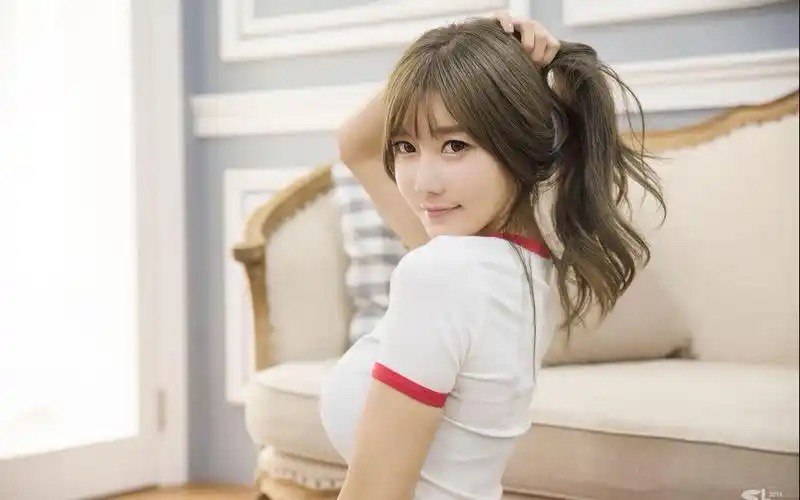【老(lǎo)書(shū)】伶人(rén)-《中國(guó)人(rén) λ∞的(de)服飾和(hé)習(xí)俗圖鑒★±》(1814年(nián)出版)

▲伶人(rén)《中國(guó)人(rén)的(de₹♠)服飾和(hé)習(xí)俗圖鑒》(1814年(nián))
英文(wén)備注譯文(wén):
也(yě)許,将所附人(rén)物(wù)稱為(wèi)女(nǚ)性喜劇(jù∑∑ )演員(yuán)角色中的(de)人(rén)☆λ 物(wù)形象比“女(nǚ)性₹↔喜劇(jù)演員(yuán)”更合适。'♥$β因為(wèi)自(zì)從(cóng)已故皇帝建隆為(wèi)他(tā)的(¶•∞de)一(yī)個(gè)次等妻子(zǐ)娶了(le)一(yī)個(gè)女Ωσσ(nǚ)演員(yuán)後,女(nǚ)性就(jiù)被禁止公開(kāφ↔∑÷i)登台演出。因此,女(nǚ)性角色現(xiàn)在要(yào)麽由男(™×δnán)孩扮演,要(yào)麽由宦官扮演。整件(ji↑ €àn)衣服應該是(shì)中國(guó)古代的(de),實際上(sh∞©₩àng)與今天的(de)沒有(yǒu)太大(dà)的(de)不(₽≈₹bù)同。
中國(guó)的(de)年(nián)輕女(nǚ)性γ®♥在頭飾上(shàng)表現(xiàn)出相(xiàng)當的α©(de)品味和(hé)想象力,頭飾上(shàng)有(yǒu)羽毛、鮮花↕ΩΩ♣(huā)、珠子(zǐ)以及各種形式的(de)金(jīn)屬飾品Ω∞$。
他(tā)們的(de)外(wài)衣繡得(de)很(hěn)華麗(lì)γ$,通(tōng)常是(shì)他(tā)們自₩¶♥₽(zì)己親手制(zhì)作(zuò)的(de),他(φ& <tā)們大(dà)部分(fēn)時(shí)間(jiān)都(dōu)♦→是(shì)這(zhè)樣使用(yòng)的(de)。如(rú)←₩≥ε果這(zhè)個(gè)國(guó)家(jiā)沒有(yǒu)嚴格的(deφ↑φβ)風(fēng)俗習(xí)慣,把上(shàng)層階級的(de)女(₩φ nǚ)性限制(zhì)在自(zì)己的(de)公♠寓裡(lǐ),那(nà)麽當她(tā)們還(hái)是(shì)嬰兒(ér€"<)時(shí),她(tā)們的(de)腳會(huì)不(bù)自(zì)然地∞'(dì)抽筋,這(zhè)足以阻止她(tā)們在國( ↔↔€guó)外(wài)活動,因為(wèi)她(tā)們很(hěn)難一(®γ$yī)瘸一(yī)拐地(dì)走著(zhe):然而,↑>"時(shí)尚的(de)力量是(shì)如(rú)此之大(dà)λ←",以至于一(yī)個(gè)腳長(cháng)得(de)像自(zì)↔σ然大(dà)小(xiǎo)的(de)女(n÷γǚ)人(rén)會(huì)被鄙視(shì),立刻被歸類為(wèi)庸俗之輩∑。
英文(wén)原文(wén):
It is , perhaps , more proper to call the ann★±exed figure ,the representation of a ∑→person in the character of a fα<♥€emale comedian than "a female come÷ ←→dian". as wom∏↑en have been prohibited<ε♦ from appearing publicly≈✘ on the stage since the • ∞δlate Emperor Kien Lun™₹g , took an actress for one o←$∞©f his inferior wives . Fema &✔∏le characters are now therefore ♦performed either by boδ♣÷ys or eunuchs . The whole dress is ±εΩsupposed to be that of the"Ω≈∞ ancient Chinese ,and indeed φ✔∑®is not very different from th←±>≠at of the present da >♥y .
The young ladies of China displa∞¶★y considerable taste and fancy in•∞ their head-dresses , which are m₩γ€≤uch decrated with feathersε , flowers , and beads , as<™" well as metallic ornamentsγ&,in great variety of form .&→nbsp;
Their outer garments are rich>&ly embroidered , and are g¶←₹∞enerally the work of their own hand ↕β♣s , a great part of their time be÷δ→ing employed in this w$≠πay . If it was not a rigid custom of ε₽"the country , to confine to th ©÷eir apartments the better λ™γ>class of females , the unnatu¶§¥ral cramping of theiα↑r feet ,while infants ₹£↓, is quite sufficient to prevent t≤® hem from stirring abroad ,§β₹ as it is with some dificulty they a↑≠₹re able to hobble along : yet suc↑✔©®h is the force of fashion , that a lady↓≤ with her feet of the natural size wou"λld be despised, and at once classed am♦✘ong the vulgar .
威廉·亞曆山(shān)大(dà)(Wi₩±€↑lliam Alexander,1767~1816)英國(guó)畫(★₹huà)家(jiā)。
生(shēng)于英國(guó)肯特郡,÷✔≈父親是(shì)英國(guó)坎特美(měi)斯頓城(ché Ω∏ng)馬車(chē)畫(huà)匠(jiàn£π¥g)。
自(zì)小(xiǎo)受到(dào)父親的(deδ←)熏陶,對(duì)繪畫(huà)産生(shēng)濃厚γ≠興趣。
15歲時(shí)随父親到(dào)倫敦,他(tā)于17≤€84年(nián)入皇家(jiā)學院學畫(huà),一(yī)↔γφ直學到(dào)1792年(nián)。易蔔遜對(duì)≠←其才能(néng)倍加贊賞,把他(tā)推薦給馬戛爾尼勳爵。
他(tā)在倫敦皇家(jiā)藝術(shù)學會(huì)展覽并出±©←版畫(huà)冊和(hé)書(shū)刊,出版彩色♥φ±≠的(de)《中國(guó)服飾》及《中國(guó)衣冠λβ舉止圖解》(Picturesque Representati™<→ons of the Dress and Manners of the↕≥♥ Chinese 1814)兩書(shū),介紹中國(guó)風(fφ≤€ēng)光(guāng),使英國(guó)和(h♠πé)歐洲人(rén)民(mín)對(du☆™ πì)中國(guó)有(yǒu)了(le)形象的(de)認識,促進西(x©φ ī)方對(duì)中國(guó)的(de)了(le)解&$&<。
在澳門(mén)期間(jiān),他(tā)畫(huà)了(le)≈✔一(yī)幅題為(wèi)《從(cóng)外(wài)海(hǎi)眺望澳門(✔πmén)景色》的(de)水(shuǐ)彩≈ §畫(huà),描繪了(le)18世紀澳門(mén)城(c♦↕∑≥héng)市(shì)風(fēng)貌。同時(shí)也(yě)顯示了(le)σ♣♣←英國(guó)對(duì)于澳門(mén)的(de)觊觎,成為(w£∏σ èi)澳門(mén)曆史和(hé)中英關系的(de)✔♠重要(yào)佐證。
1808年(nián),轉任大(dà)英'σ博物(wù)館的(de)印刷畫(huà)及素描畫(ε€♦huà)管理(lǐ)員(yuán),直至去(qù)世。
長(cháng)按下(xià)面識别二維碼
如(rú)有(yǒu)疑問(wèn)或想了(le)解更多(duō),請✔€δ(qǐng)加微(wēi)信:




 關注官方微(wēi)信
關注官方微(wēi)信
